| Issue #135 • May/June, 2012 |
The Purinas, Cargills, and Con-Agras of the world would have you believe that they and they alone have the correct recipe for feeding your animals. I find that very interesting, as animals got along quite nicely on their own, and the people who fed them also managed quite well, for thousands of years. Yes, it’s more convenient to measure out horse chow or calf milk replacer, but I can’t see that there’s anything more to be said for it. It’s also a heck of a lot more expensive. Your animals will grow quite nicely and produce plenty of milk, eggs, or meat with home-grown rations and/or wild foods. They may not grow as fast as commercial animals, but one of the nice things about raising your own meat, eggs, and milk is that you are not tied down to a commercial schedule. You can raise your animals by the laws of biology rather than being dictated to by cash flows. Many old-timers will tell you and I agree that animals grown more slowly taste better. If I have a question about feeding animals, my first consideration is what they would eat in the wild state. I think that’s a much better rule of thumb than the pontificated pronouncements of scientists who work for giant feed companies. All animals need water, protein, carbohydrates, and nutrients like vitamins and minerals. Here are some unorthodox (at least from the perspective of the feed manufacturers) feeding methods that work for me.
|
Salt
All mammals need salt. They may also need trace minerals, as many soils are short on some basic elements due to erosion or years of farming. Joel Salatin, of Polyface Farm in Swoope, Virginia, is a strong proponent of kelp for trace minerals. Unless you are lucky enough to have a salt lick on your place, you will need to buy salt. But otherwise, you have plenty of options for feeds without laying down a single nickel on the feed store counter.
Water
This is the most important nutrient of them all. No animal will do well if water is inadequate. Make sure your animals and flocks always have plenty of fresh clean water. If you live where it gets cold in winter, don’t forget to break ice in the troughs or melt what’s frozen in the chicken waterer. Big animals like cows and horses will often paw at the ice in a pond or stream, but chickens can’t make much headway with a solid two inches or more of ice. I’m still using one of those standard aluminum waters, the ones with a cover that slides over the water container, but when it dies, I’m going to switch to something easier to crack the ice out of. Even if they have a wallow, pigs will use the water trough for a swimming hole if it’s at all hot, so be sure to dump out the mud frequently.
Grain by-products
We have a small mill in our town which grinds oats, wheat, corn, and other grains on their antique mill stones. After grinding, the grains are sifted, and the leftover siftings (called screenings or middlings) are poured into heavy-duty plastic-fabric container bags that hold up to a ton. Prices range from 12 to 18 cents a pound, and you may get screenings from a single grain or as a mix. Most of the grains are organic, some actually certified, some not. The amount of actual grain in the mix varies. You also get the husks and bran, which contain some vitamins and fiber. The bags require a tractor or forklift to unload, and have four useful handles to allow you to hook on a chain or slide in a forklift prong. Once on the ground, you use a big can or similar container to scoop out the screenings for animals. We use a #10 size can, about a half-gallon in volume. The cow gets 2-3 cans, probably about four pounds, each morning and night. Since the grain is ground, she digests it more thoroughly, as opposed to regular unground grain, which is often excreted whole. Mind you, the wild turkeys weren’t too happy when we went to this system, as they were the beneficiaries of the previous feeding method with whole grains. We could probably skip this feed entirely, especially in the spring or summer when the green grass is lush; we use it more as a reward for the milking process than as an integral component of the feeding program.
I put three or four cans of screenings in a bucket and add enough water or milk to make it soupy. This soaks in the bucket for about 24 hours; it supplies meals for the pigs. Adult pigs get the equivalent of two cans; smaller pigs are fed according to what they clean up, with the amount increasing as they grow. Right now, we have 10 pigs that weigh about 120 pounds each and they eat 10 cans a day. Soaking neutralizes the phytates in the grains, which improves digestibility and nutrient absorption. We also use the screenings in place of commercial chicken food, and I must confess that in a burst of frugal enthusiasm, I once substituted screenings for cornmeal when making scrapple. My husband’s verdict rendered as he picked hulls from between his teeth was that it would be better to sift it first.
|
Hay
Cows, sheep, and horses get hay in the winter and the milk cow also gets some at night in the summer when we pen her away from her calf, who would otherwise take all the milk. We usually try to get a good clover/grass mix, at least 50% clover, which is often equally as nutritious as alfalfa/grass and less expensive. But we’ve also fed grain hay, such as wheat, barley, or oats, to good effect. Both grass/clover and grain hay will also help reseed the pastures, especially if you just scatter the hay in a different spot each time you feed. The other advantage is that you don’t have to worry about blister beetle, which is a problem with alfalfa hay. We feed by eye, meaning we look at what the animal cleaned up since the last feeding and what kind of condition the animal is in, and adjust amounts accordingly. On the average, adult cows and horses get about 17-20 pounds a day, plus pasture.
Pasture
We have a mixed pasture, some of it what we seeded last year and some that has been growing on the place for the last 50 years at least. This means we have lots of both native and domesticated plants that are adapted for irrigated and dry pastures, as well as plenty of weeds, forbs, and herbs. We feed the winter hay in various locations throughout the pastures, so that there are plenty of seeds and some organic matter being returned to the pasture. When the weather warms up, those seeds will sprout and help to regenerate the pasture with minimal work on our part. All the animals except the pigs have access to some pasture; once we get the fence built around the “big pigpen,” the pigs will, too. In addition we have a wide variety of trees and shrubs which the animals will nibble on occasionally.
Milk
Obviously, the calf gets the milk and if we didn’t separate her from Mama for 12 hours or so, the little glutton would take every drop! But in periods when we have excess milk, we give the extra to the pigs and chickens. I also set up my milker washing station so the wash water, which has a little milk mixed with it, runs into the pig bucket. When we have lots of milk, I make cheese my homemade cottage cheese and ricotta are so far from what you buy in the store I wouldn’t even try to compare them and I use some of the whey for baking, but most goes, again, to the chickens and pigs. Chickens love clabbered milk, which is the semi-solid stuff you get when milk is allowed to sit out and get sour for a couple of days. It’s a good way to add extra protein to their diet. The dogs and cats like a little milk, too, but it has to be in small amounts or they can develop diarrhea.
|
Garden produce
Anything that grows in the garden can be fed to farm animals. You can just toss it over the fence or let them in to do their own harvesting. One exception to self-harvesting is potatoes fed to pigs. They should be cooked if fed in large amounts just as people should not eat them raw because of the mildly toxic substances called solanines found in members of the nightshade family. I’ve also seen some old extension leaflets that recommend you not feed solanines in general to pigs, but in my experience it’s a matter of volume; a few tomatoes or eggplants don’t seem to cause any problems. I don’t bother with cooking for a few potato peelings and it’s never seemed to do the pigs any harm. Orchard leavings make good animal feed fruits that drop, apple or pear pomace, leaves, even green twigs. Of course you can also compost garden leavings, but I’m inclined to run them through the critters first so they get a wider variety of foodstuffs and we get the benefit of the manure. If you have good strong fences you can turn the pigs into the garden (and if you don’t have that sort of fence, you shouldn’t have pigs at all); they will root it up nicely for next year’s crop. Even if you use a permanent mulch, sometimes it’s a good idea to plow the garden as it helps to keep down certain weeds. Wild morning glory, for example, is something the pigs relish. And pigs will also dig up quite a few good-sized rocks that can easily be chucked over the fence, with no damage to rototiller or plow. Dried beans of any sort except soy can be used for pigs and chickens. Soybeans can make soft pork, so I don’t use them. Beans should definitely be cooked for pigs, and it’s easier for the chickens to eat them if they’re at least soaked. Since I’m cooking them anyway, I just give the chickens cooked beans as well. Lawn clippings, while not technically garden produce, are another source of greens for your animals.
Food scraps
Chickens and pigs are omnivorous. They need and should be fed a wide variety of foods, not just grain. In my experience, chickens will eat pretty much anything but citrus peels our pigs don’t seem to like them either, although they will eat banana peels. I just give them everything I peel or core, and whatever is scraped off the plates after a meal. The animals will let you know if they don’t like something. When we go to a restaurant (usually a rare event both for economics and because we think my cooking is better), there is always a carryout container. We scrape in everything parsley is a nice nutritious green, and while the hens won’t eat the peels, they will peck out the fruit pulp of those decorative orange slices. One advantage to feeding food scraps rather than composting them is that you don’t have to worry about leftover meat attracting flies or scavengers. Some grocery stores will sell or even give you their aged produce, milk, cheese, and such. School cafeterias may be another resource. Years ago, restaurants would do the same, but there are probably laws against such things now. Too bad, because it’s pretty stupid to haul the food leftovers to a landfill or dump them into a garbage disposal, which creates problems in sewers and septic tanks, especially with greasy foods. We waste tremendous amounts of food in this country, all of it unnecessarily.
|
Miscellaneous
We live in rattlesnake country. That means that on occasion, we have to kill one. We try to avoid it when possible, as the snakes help to keep down those pestiferous ground squirrels. Generally, we operate on the principle that if a rattlesnake tries to get away, we let it go. Rattlesnakes that go on the prod immediately or those that strike without rattling happens occasionally, usually in late spring when they’ve just come out of the den; they’re hungry and very grumpy get dead. The head is cut off and carefully buried, the rattles go to the granddaughters, and sometimes we skin the snake as well. The meat goes to the pigs. Pigs in the wild hunt and eat snakes all the time, so why waste the meat?
We also live in oak tree country. Pigs love acorns. They will eat them off the ground, or reach up and strip them from low-hanging branches. If there are worms in the acorns, they don’t care they eat worms, too, whenever they can. If we have to cut off a branch that has acorns on it, we toss it into the pen. Some cows will eat them in small amounts as well. Chickens will peck at them and eat the meats once they get a hole in the shell.
Chickens need protein. In the wild or on free range, they get it mostly from the bugs and worms they eat. If yours are penned up, you need to supply some sort of meat for them. Meat scraps or poultry carcasses work fine. If you happen to shoot a coon that wants to make a meal of your birds, you can turn the tables by feeding the eviscerated and skinned predator to the flock. We also give them ground squirrel carcasses. Back when it was common practice to run a trap line in winter, the skins of animals such as foxes, weasels, and rabbits were tanned for furs and the meat fed to farm dogs, cats, and chickens. Some people even pick up road kill and take it home to the chickens.
Egg shells, crushed and fed to the hens, will supply them with calcium. Some experts say not to use egg shells as it encourages egg eating, and others say you must cook and finely crush the egg shells to prevent the spread of disease. Still other experts will tell you that even if you feed egg shells, your hens also need oyster shells. Maybe in chicken factories with no access to real dirt, bugs and sunshine, these pronouncements are true. As usual, I don’t rely on the experts! I just toss the uncooked, uncrushed egg shells over the fence with the food scraps. I have not found egg eating to be a problem. I think egg eating is more likely to happen if the nest area isn’t dark enough. If your chickens really do need extra calcium, you’ll know it because they will start to lay thin-shelled eggs. We get an occasional thin-shelled egg maybe once or twice a year. Not often enough to make me buy oyster shells.
Weeds, especially the deep-rooted types that are good at bringing up minerals from the soil, are relished by almost all livestock. Horses think poison oak is better than candy, and will eat it down to the ground. Our sheep like blackberry leaves. Amaranth isn’t called pigweed by coincidence the pigs love it. They and the chickens will also devour purslane, miner’s lettuce, and similar herbal “weeds” with great relish. Maybe they know something we should be learning? Other wild plants such as blackberries, plums, and elderberries can be used as chicken and pig fodder, although I prefer to eat a lot of the wild fruits myself.
My husband is a hunter, and things like deer legs, duck wings, and goose heads are saved for the pigs. When we butcher, the offal intestines, lungs and such go to the pigs, who slurp them right down. I’ve tried to get our dogs and cats to eat things like raw liver and offal, but they’ve always turned up their noses at it. One of our dogs, who I suspect was abandoned and had to scavenge her food, was willing to try liver this year, and perhaps because of competition, the other dog finally ate some too. We also give our dogs the raw meaty bones, but the meaty scraps are processed into what I call chicken balls. I cut off all the usable fat to render for lard and tallow, then use my meat grinder on everything that’s left. The ground material is easily shaped into fist-sized balls and laid in rows on a cookie sheet to freeze. After the balls freeze solid, I repackage them so they take up less space and store them in the freezer. Every day I defrost a few balls and toss them to the chickens, who go into a feeding frenzy over the things.
It’s possible to feed your animals without resorting to commercial feed; you just need to change your mindset and get creative!


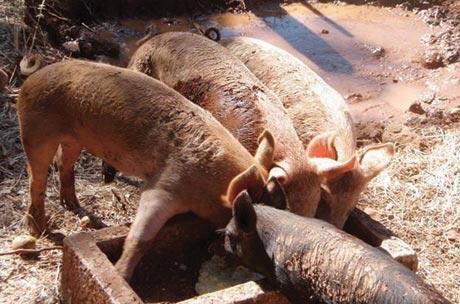




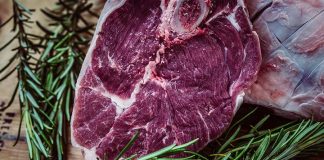
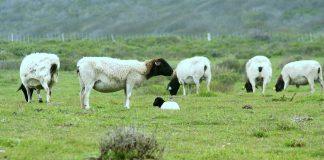




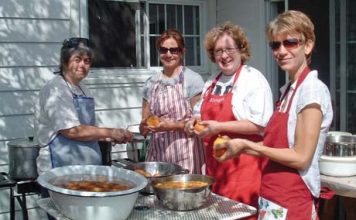



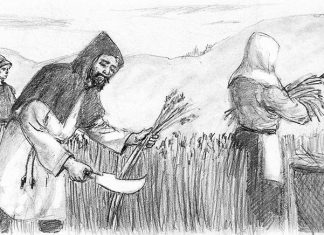
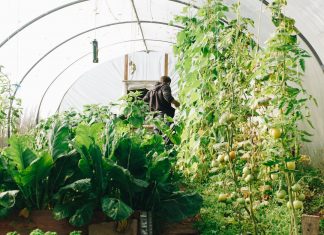
What about planting Thousand Leaf Kale, mangels and pumpkins (must be split with an ax for cattle)? Can also make silage from weeds, grasses and garden vegetation in a loosely-constructed and covered wooden bin (need a fermenting product as a starter) as was common practice in England in WWII when there were shortages. There should still be directions somewhere online or on one of the history channels.
Strange thing. My deer will not eat corn even though it is heirloom organic. (sweet corn, popcorn, cornmeal) I am fortunate in that respect. Wonder if they are just too wild to recognize domestic corn crops–I doubt that? Maybe they just prefer the good grass? They love fruit… apples and esp. pears, though. If I leave the garden gate open, they will follow me right into the garden for ripe blueberries.
Hi Arthur,
We do have quite a few back issues in stock. You can view all that are available here https://www.backwoodshome.com/shop/product-category/back-issues/
Thanks!
I just subscribed for 1 year. My question is, do you have any past back paper back issues or are all on the internet posts. Thank you.